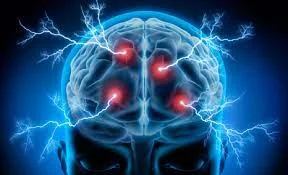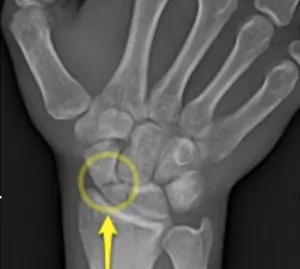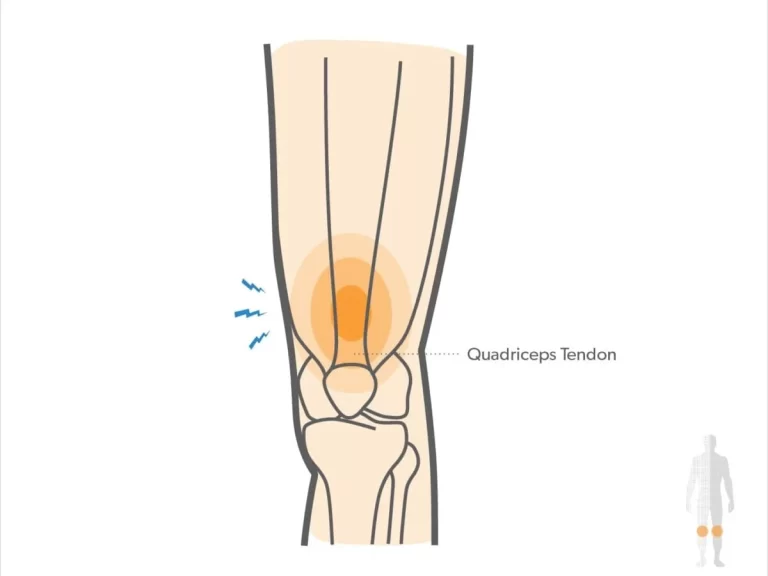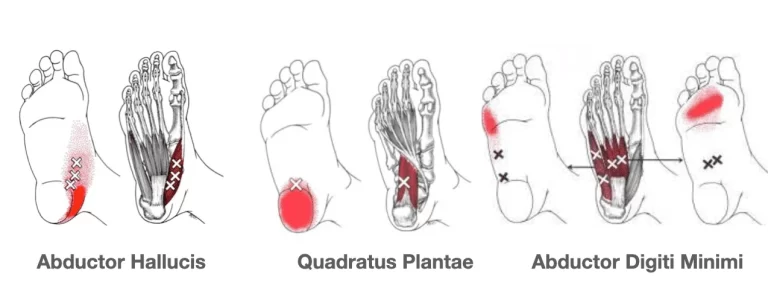Multiple System Atrophy
Multiple System Atrophy: What is it?
Multiple system atrophy (MSA) is a rare neurological illness that causes some brain regions to degenerate. Over time, this impairs the capacities and functioning of specific brain regions. This sickness is eventually dangerous.
MSA is a unique word that combines the characteristics of three previous disorder designations. The conditions are:
- Shy-Drager Syndrome.
- Sporadic olivopontocerebellar atrophy.
- Striatonigral degeneration.
After seeing that the disorders listed above shared similar characteristics, experts developed the term multiple system atrophy. The symptoms vary depending on which parts of the brain are injured, therefore, they can take many forms.
After identifying MSA as a distinct disease, doctors further characterised it by categorising it into two kinds based on symptoms:
MSA-C. The C in this name stands for “cerebellar.” This kind of MSA impairs your ability to coordinate movements, generating symptoms such as ataxia. That is the most noticeable symptom, however, patients with this kind also have autonomic dysfunction and fall.
MSA-P. The P in this term stands for “Parkinsonism.” This kind of MSA produces symptoms similar to those seen in the parkinsonism family of movement disorders. Parkinsonism may be more noticeable at first, however, autonomic symptoms can co-exist with ataxia.
What Causes Multi-System Atrophy?
Experts aren’t sure why MSA happens. However, they assume it has something to do with a specific protein, a-synuclein (alpha sy-nu-clee-in), which may accumulate in various areas of the brain. That same protein, specialists believe, plays an important role in the development of Parkinson’s disease.
Proteins are essential chemicals for how your body works, facilitating communication between different bodily systems, transporting various chemical compounds throughout your body, and much more. However, when proteins accumulate in the incorrect areas, they can cause harm. Experts believe that injury is what causes the gradual degradation of brain tissue in MSA patients.
Scientists are currently investigating why a-synuclein accumulates in certain parts of the brain. They assume it is due to genetic changes that impair how particular cells utilise a-synuclein. There is also evidence that MSA-C runs in families. However, specialists have yet to find evidence of such a genetic relationship with MSA-P.
What are the Signs of Multiple System Atrophy?
Some MSA symptoms are common to both types of the disease, while others are unique to the type of MSA a person has. Both kinds of MSA have symptoms of autonomic dysfunction. This indicates that your body’s capacity to perform functions automatically is not working as it should.
Signs of autonomic dysfunction include:
- Orthostatic hypotension.
- Trouble regulating your bladder, which leads you to urinate unintentionally.
- Sexual dysfunction, including erectile dysfunction, can occur in persons with a penis.
- Rapid eye movement (REM) sleep behaviour disturbance, comparable to sleep issues in Parkinson’s disease.
- Reduced sweating (anhidrosis).
- Vision issues.
- Dry mouth.
- Sleep Apnea.
- Digestion slowed, and constipation developed.
- Many autonomic symptoms of MSA emerge months or even years before motor (movement) problems. This happens in 20-75% of MSA instances.
Cognitive and emotional symptoms
Approximately one-third of MSA instances involve interruptions in people’s capacity to focus and concentrate, as well as control over their own emotions. This frequently leads to mental health disorders like:
- Anxiety.
- Depression.
- Emotional instability can lead to inappropriate tears or laughter.
- Panic attacks.
- Suicidal ideation.
Movement-related symptoms
MSA-C cerebellar symptoms typically manifest as ataxia, or lack of coordination. The cerebellum is a component of the brain that controls muscular movements. This breakdown of coordination can result in the following:
- Clumsy or uncontrolled limb motions.
- Action tremor (shaking that worsens when attempting to utilise the affected bodily part).
- Walking with unusually broad steps.
- Nystagmus refers to jerky, uncontrolled eye movements.
Parkinsonism symptoms with MSA-P frequently begin on one side of the body and later progress to both sides. These symptoms generally include the following:
- Slower motions (bradykinesia).
- Stiffness and stiffness when moving, resulting in a crossed-over position.
- Walking-related falls.
- Mumbling or having difficulty speaking.
How can Multiple System Atrophy influence the body?
MSA causes degeneration in many brain locations. The symptoms vary depending on which parts are impacted. The most often affected areas of your brain are:
Basal ganglia. These are structures in the centre of your brain that connect various parts of it. They form a vital network that allows various areas of your brain to operate together.
Brainstem. Many of your body’s most important autonomic processes are managed by your brainstem. These components are required for survival, yet your body processes them naturally and without your knowledge. They include respiration, heart rate, and blood pressure.
Cerebellum. This structure in the back of your skull helps you coordinate your motions. It also cooperates with other brain regions. Researchers are still learning about it, but some evidence shows it may also affect emotions and decision-making.
MSA symptoms are uncommon depending on which parts of your brain are affected. As the damaged regions degrade, you will have increasing trouble with the talents they regulate. For example, the degradation of your brainstem produces issues with autonomic functions such as blood pressure.
Who is affected by Multiple System Atrophy?
MSA affects persons over the age of thirty. The symptoms are most likely to develop between the ages of 50 and 59. The illness affects everyone equally, regardless of gender.
How prevalent is Multiple System Atrophy?
Multiple system atrophy is an uncommon disorder. Experts estimate that there are between 0.6 and 0.7 new cases per 100,000 persons each year. The anticipated total number of cases ranges from 3.4 to 4.9 per 100,000 individuals.
What is the Diagnostic procedure for Multiple System Atrophy?
The only method to establish MSA is to analyse brain tissue after death. This is because it is impossible to detect an accumulation of a-synuclein in parts of the brain while a person is still living.
While a person is alive, healthcare experts may suspect MSA based on their symptoms, medical history, family history, and response to specific therapies. It is typical for healthcare experts to first diagnose a person with Parkinson’s disease or another form of parkinsonism, only to modify the diagnosis when further symptoms develop or specific therapies fail.
Some important characteristics that differentiate MSA from Parkinson’s disease include the following:
MSA moves quicker. Autonomic dysfunction often develops after years of Parkinson’s disease. Autonomic dysfunction in MSA might develop within a year.
Some symptoms manifest differently. Autonomic symptoms, for example, are typically more severe with MSA, whereas tremors are less severe or might not occur at all. The distribution of symptoms throughout your body might also vary.
Treatments do not operate as supposed. Levodopa is the primary therapeutic choice for Parkinson’s disease. In contrast, MSA does not react favourably to levodopa. This is frequently used by healthcare practitioners to determine if a patient has MSA or Parkinson’s disease.
What Tests will be performed to diagnose this condition?
There are relatively few tests that can be used to diagnose MSA directly. Instead, these tests assist in ruling out other illnesses and provide evidence to support the diagnosis of MSA. Several possible tests include:
Magnetic resonance imaging, or MRI. This test can occasionally detect damage in certain parts of your brain, allowing clinicians to narrow down the diagnosis. It can also help diagnose MSA-C, which causes a crisscross pattern in a portion of your brain (known as the “hot cross bun” sign). That symptom emerges when certain parts of brain tissue degenerate while others do not. However, because that symptom might occur in conjunction with other illnesses, it is insufficient to diagnose MSA.
Genetic testing. This test can determine whether a person has a mutation that affects how their body processes a-synuclein. In persons of Japanese origin, genetic testing is more likely to detect MSA-C-related mutations.
Skin biopsies. Some skin biopsies can detect evidence of a-synuclein accumulation in nerve tissue. However, additional study is needed before experts can say whether it is beneficial enough to advocate making it a normal component of the diagnostic process.
Your healthcare practitioner might inform you about other tests they prescribe and why they believe they would help. They will give information that is most relevant to your case, taking into account your health history, family history, and other factors.
Treatment of Multiple system atrophy:
Multiple system atrophy (MSA) treatment consists of symptom management. There is no cure for MSA. Managing the condition can make you as comfortable as possible while also allowing you to preserve normal bodily processes.
To treat certain symptoms, your healthcare provider may suggest:
Blood pressure-raising medicines. These medications can treat low blood pressure caused by standing after sitting or lying down, often known as postural hypotension. There are various medications that your doctor may suggest.
The corticosteroid fludrocortisone can raise blood pressure by causing your body to retain more salt and water.
Midodrine (Orvaten) can quickly boost your blood pressure. This medication should be used with caution since it might raise blood pressure while lying down. Do not lie down for four hours after taking this medication.
Pyridostigmine (Mestinon, Regonol) can elevate your blood pressure while standing but not much when lying down.
Droxidopa (Northera) is another medication that can treat postural hypotension. The most frequent adverse effects of droxidopa include headaches, dizziness, and nausea.
Medicines that alleviate Parkinson’s disease-like symptoms. Parkinson’s disease medications, such as levodopa and carbidopa (Sinemet, Duopa, and others), can benefit some patients with MSA. The medication can cure stiffness, balance issues, and sluggish movements.
Many persons with multiple system atrophy do not react to Parkinson’s medication. Medicines may also lose effectiveness after a few years.
Medicines for treating erection difficulties. If you’re having difficulties attaining or maintaining an erection, sildenafil (Revatio, Viagra) can help. This medication helps with erectile dysfunction, but it can also drop blood pressure.
How to treat swallowing and breathing issues. If you have difficulty swallowing, consider eating softer foods. If your swallowing or breathing issues worsen, you may require surgery to place a feeding or breathing tube. A gastrostomy tube feeds food straight into your stomach.
If you have sleep apnoea, you may be treated with CPAP or BiPAP. Stridor can also be treated using CPAP.
Bladder care. If you have bladder control issues, medications can assist in the early stages. However, when MSA worsens, you may need to have a soft tube implanted to empty the bladder. The soft tube is referred to as a catheter.
Therapy. A physical therapist can assist you in maintaining as much movement and strength as possible while your condition progresses.
A speech-language pathologist can assist you with improving or maintaining your speech.
How Multiple System Atrophy (MSA) impacts your life:
- Multiple system atrophy (MSA) shortens life and can deteriorate fast.
- Most people ultimately require some assistance and support with their everyday activities.
- MSA impacts everyone differently, thus, the sort of assistance and the speed with which it is required might vary.
- If you are diagnosed with MSA, your care team will be able to explain how your disease will affect you and your family.
Lifestyle and household remedies:
Some lifestyle and home treatments can assist in alleviating multiple system atrophy (MSA) symptoms.
Take action to increase your blood pressure. Add some salt to your diet and drink extra water, especially before working out. Salt and fluids can cause a rise in blood volume and blood pressure. Drinking coffee and other caffeine-containing beverages will raise your blood pressure.
Raise the head of the bed. Raising the head of your bed by 4 to 6 inches (10 to 15 centimetres) can help manage your blood pressure as you sleep. Get up cautiously after lying down.
Make diet modifications. Consume additional fibre to relieve constipation. Laxatives and stool softeners may assist. You may purchase these without a prescription. Eat modest, low-carbohydrate meals.
Do not become too heated. Stay in air-conditioned rooms on really hot days. Make sure the bathroom doesn’t get too hot when you shower or bathe.
Wear elastic support stockings up to the waist. This can assist in preventing your blood pressure from plummeting.
How can I prevent this problem or reduce my risk?
Experts are unsure of what causes MSA or whether certain variables contribute to it. As a result, it is difficult to avoid or lower your chances of having it.
What should I expect if I have this condition?
People with MSA frequently experience movement-related symptoms first. This problem worsens with time. Approximately half of the patients with this illness require assistance walking during this period. That generally entails walking with a cane, walker, or other assistance equipment. Around five years following the beginning of MSA, around 60% of persons with the condition require the use of a wheelchair. Within six to eight years, at least half of persons suffering from this illness are bedridden.
As the condition progresses, many patients will require further treatments or interventions to preserve or change bodily functions and avoid severe consequences. Some of these interventions are:
- Tracheostomy to maintain breathing capacity.
- Tube feeding (also known as enteral nutrition).
- Urinary incontinence treatment may include indwelling catheters or a urostomy.
- A colostomy is performed to address intestine incontinence.
Risk Factors of Multiple System Atrophy:
Having a rapid eye movement (REM) sleep behaviour problem increases your chances of developing multiple system atrophy. People with this illness act out their dreams. The majority of persons with MSA have a history of REM sleep behaviour disorder.
Another risk factor is a problem caused by the autonomic nervous system’s failure to function properly. Urinary incontinence might be an early indicator of MSA. The sympathetic nervous system controls involuntary movements.
Complications of Multiple System Atrophy:
Complications of multiple system atrophy (MSA) differ by individual. MSA symptoms, however, worsen over time for all patients. As the symptoms progress, daily tasks may become more difficult.
Among the potential issues are:
- Breathing difficulties worsen while sleeping.
- Falls due to poor balance or fainting might result in injuries.
- The deterioration of the skin in those who have difficulty moving or cannot move.
- Being unable to care for oneself in daily tasks.
- Vocal cord paralysis impairs speech and respiration.
- Increased difficulty swallowing.
- People usually survive for 7 to 10 years after multiple system atrophy symptoms first occur. However, the survival rate for MSA varies significantly. Breathing problems, infections, or blood clots in the lungs are frequently the causes of death.
FAQs
What’s the cause of multiple system atrophy?
There is no known cause of multiple system atrophy. Some studies are looking at the potential impact of genetics or environmental factors, such as a toxin in MSA. However, there is no strong evidence to support these hypotheses. MSA causes degeneration in particular parts of the brain.
Are you able to recover from MSA?
Multiple system atrophy (MSA) treatment consists of symptom management. There is no cure for MSA. Managing the condition can make you as comfortable as possible while also allowing you to preserve normal bodily processes.
Do persons who have MSA sleep a lot?
In rare circumstances, this can be serious. It is particularly frequent in persons with later-stage MSA who are taking many drugs.
What are the last phases of MSA?
Patients experience difficulty eating, swallowing, speaking, and breathing as the condition progresses.
Is MSA serious?
Multiple system atrophy (MAS) is a severe and deadly condition. Unfortunately, this illness cannot be cured or treated immediately. However, many of its symptoms are curable, and there may be strategies to reduce the severity of symptoms.
What is the age range for MSA?
The majority of MSA cases occur between the ages of 50 and 60. Older persons may also develop MSA. Nobody under the age of 30 has been diagnosed with MSA.
What is the latest therapy for MSA?
Closing the gap between symptom control and disease progression. According to the most recent Lundbeck publications, amlenetug (Lu AF82422) is a monoclonal antibody that targets alpha-synuclein and is expected to be the first disease-modifying therapy (DMT) for MSA.
Referances
- Website, N. (2025, March 6). Multiple system atrophy (MSA). Nhs.uk. https://www.nhs.uk/conditions/multiple-system-atrophy/
- Multiple system atrophy – Diagnosis and treatment – Mayo Clinic. (n.d.). https://www.mayoclinic.org/diseases-conditions/multiple-system-atrophy/diagnosis-treatment/drc-20356157
- Multiple system atrophy. (2025, March 19). Cleveland Clinic. https://my.clevelandclinic.org/health/diseases/17250-multiple-system-atrophy







